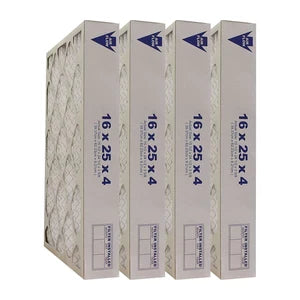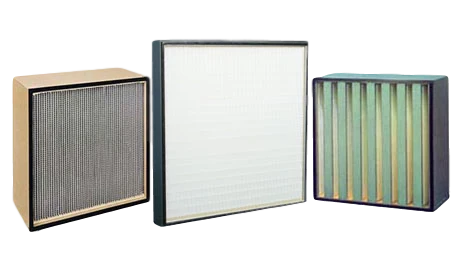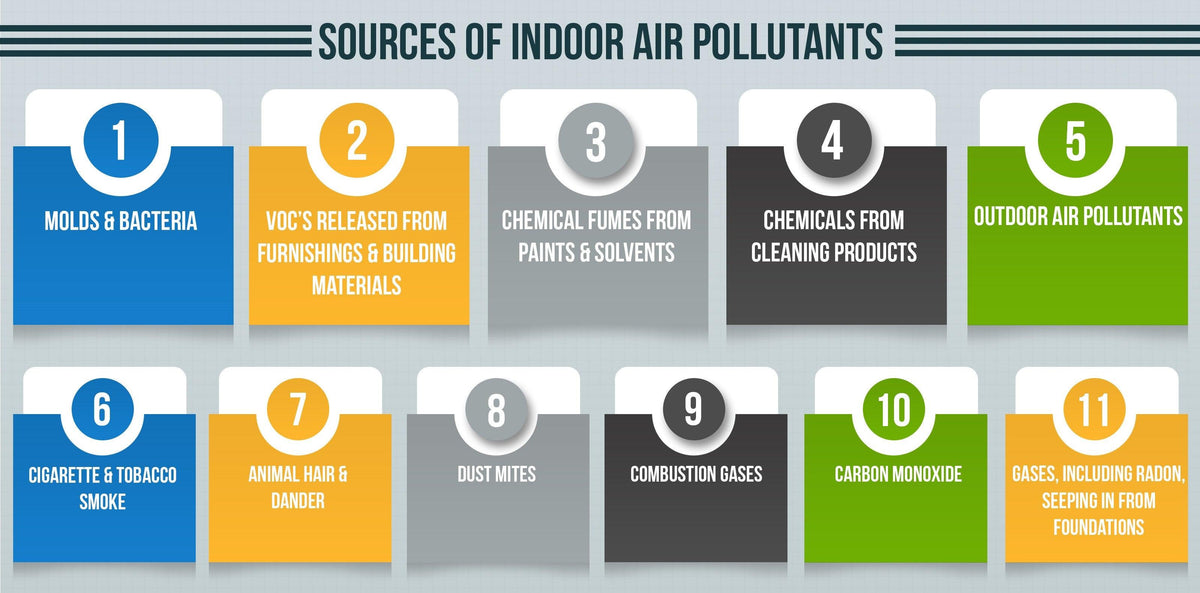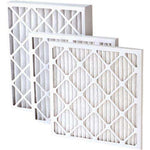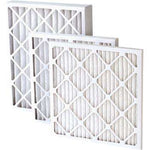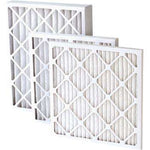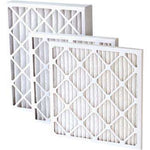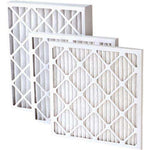You have no items in your shopping cart.
Home is the heart of our worlds. It’s where we eat, sleep, bathe, entertain and do most of our living. While all these activities add to our relaxation and enjoyment, they can also cause a buildup of pollutants like cooking fumes and dust particles. Indoor allergens and pollutants hit their peak in the winter when homes are sealed against the cold. Indoor air quality can suffer when homes are shut up tight and built with the wrong materials. Here are some pointers to help you make your home healthier. Pollutants in your air can cause poor indoor air quality, which can impact how healthy your home is and how comfortable it feels. Fortunately, there’s a solution to most air quality problems.
5 Simple Steps to Improve Indoor Air Quality
1. Keep your floors fresh.
Though it's tempting to put off chores, it's important to clean regularly to reduce allergens and irritants. Dust with a damp cloth rather than a feather duster -- and don't forget hard-to-reach areas such as ceiling fans and the top of the refrigerator.
To avoid potentially harmful vapors, purchase nontoxic, non aerosol, unscented cleaning products (or make your own using household products). And use a vacuum cleaner with a HEPA filter for the best results
-
Suck it up. Chemicals and allergens can accumulate in household dust for decades. By using a vacuum with a HEPA filter you can reduce concentrations of lead in your home. You can also get rid of other toxins, like brominated fire-retardant chemicals (PBDEs) as well as allergens like pollen, pet dander, and dust mites.
Using a vacuum cleaner that has strong suction, rotating brushes, and a HEPA filter ensures that dust and dirt won’t get blown back out in the exhaust. In high traffic areas, vacuum the same spot several times. Don't forget walls, carpet edges, and upholstered furniture, where dust accumulates. For best results, vacuum two or more times each week and wash out your filter regularly.
-
Mop it up. Mopping picks up the dust that vacuuming leaves behind. You can skip the soaps and cleaners and just use plain water to capture any lingering dust or allergens. New microfiber mops (and dust cloths) reportedly capture more dust and dirt than traditional fibers and don’t require any cleaning solutions whatsoever.
-
Keep it out. Put a large floor mat at every door.People track in all sorts of chemicals via the dirt on their shoes. A door mat reduces the amount of dirt, pesticides, and other pollutants from getting into your home. If the mat is big enough, even those who don't wipe their shoes will leave most pollutants on the mat -- not the floors in your home.
2. Circulate, Circulate
Even when the weather is cool, open the windows to let in fresh air (especially while you're cleaning, cooking, or painting). If it's simply too cold, run ceiling fans to keep air circulating.
And don't forget to flip on the exhaust fan while you cook. Otherwise, noxious vapors, grease, and smoke are released into the air where they'll linger.
3. Filter Refresher
Regularly check and replace the filters in your heating/cooling system to minimize contaminants in the air. Consider installing an electrostatic filter, which employs an electric charge to capture more airborne particles than standard filters.
4. Smoke Signals
Candles, cigarettes, and wood-burning fireplaces all release pollutants that worsen air quality and can even trigger health problems. To help keep your home's air clean, buy only nontoxic candles (such as unscented soy varieties), and don’t allow smoking indoors.
If you must use a fireplace, use cured or dried wood instead of pressure-treated wood, and have your chimney and flue inspected and cleaned regularly.
5. Solve dry indoor air problem
Maintain ideal humidity levelWhen cold air is heated, it expands, causing the relative humidity (RH) in your home to decrease. This may be particularly evident in the winter months, when indoor RH can drop into single digits—similar to that of the world’s driest deserts.
Some signs the humidity in your home may be too low include:
-
Frequent allergies or respiratory illnesses
-
Scratchy, sore throat or excessive cough
-
Dry, irritated nasal passages
-
Dry, itchy skin
-
Chapped lips
-
Static shocks
-
Cracked, peeling wallpaper
-
Warped or cracked wood
-
Damage to household furnishings
Designed to easily integrate with your HVAC system, a Dehumidifier removes excess moisture from the air. Depending on the model you choose, you can control humidity in your entire home or a single area. humidifiers add moisture to your home’s air as needed to keep it comfortable
Install a 0.3 micron or smaller air filter in your forced air system to stop the circulation of dust and other particles through your home.
Home is the heart of our worlds. It’s where we eat, sleep, bathe, entertain and do most of our living. While all these activities add to our relaxation and enjoyment, they can also cause a buildup of pollutants like cooking fumes and dust particles. Indoor allergens and pollutants hit their peak in the winter when homes are sealed against the cold. Indoor air quality can suffer when homes are shut up tight and built with the wrong materials. Here are some pointers to help you make your home healthier. Pollutants in your air can cause poor indoor air quality, which can impact how healthy your home is and how comfortable it feels. Fortunately, there’s a solution to most air quality problems.
5 Simple Steps to Improve Indoor Air Quality
1. Keep your floors fresh.
Though it's tempting to put off chores, it's important to clean regularly to reduce allergens and irritants. Dust with a damp cloth rather than a feather duster -- and don't forget hard-to-reach areas such as ceiling fans and the top of the refrigerator.
To avoid potentially harmful vapors, purchase nontoxic, non aerosol, unscented cleaning products (or make your own using household products). And use a vacuum cleaner with a HEPA filter for the best results
-
Suck it up. Chemicals and allergens can accumulate in household dust for decades. By using a vacuum with a HEPA filter you can reduce concentrations of lead in your home. You can also get rid of other toxins, like brominated fire-retardant chemicals (PBDEs) as well as allergens like pollen, pet dander, and dust mites.
Using a vacuum cleaner that has strong suction, rotating brushes, and a HEPA filter ensures that dust and dirt won’t get blown back out in the exhaust. In high traffic areas, vacuum the same spot several times. Don't forget walls, carpet edges, and upholstered furniture, where dust accumulates. For best results, vacuum two or more times each week and wash out your filter regularly.
-
Mop it up. Mopping picks up the dust that vacuuming leaves behind. You can skip the soaps and cleaners and just use plain water to capture any lingering dust or allergens. New microfiber mops (and dust cloths) reportedly capture more dust and dirt than traditional fibers and don’t require any cleaning solutions whatsoever.
-
Keep it out. Put a large floor mat at every door.People track in all sorts of chemicals via the dirt on their shoes. A door mat reduces the amount of dirt, pesticides, and other pollutants from getting into your home. If the mat is big enough, even those who don't wipe their shoes will leave most pollutants on the mat -- not the floors in your home.
2. Circulate, Circulate
Even when the weather is cool, open the windows to let in fresh air (especially while you're cleaning, cooking, or painting). If it's simply too cold, run ceiling fans to keep air circulating.
And don't forget to flip on the exhaust fan while you cook. Otherwise, noxious vapors, grease, and smoke are released into the air where they'll linger.
3. Filter Refresher
Regularly check and replace the filters in your heating/cooling system to minimize contaminants in the air. Consider installing an electrostatic filter, which employs an electric charge to capture more airborne particles than standard filters.
4. Smoke Signals
Candles, cigarettes, and wood-burning fireplaces all release pollutants that worsen air quality and can even trigger health problems. To help keep your home's air clean, buy only nontoxic candles (such as unscented soy varieties), and don’t allow smoking indoors.
If you must use a fireplace, use cured or dried wood instead of pressure-treated wood, and have your chimney and flue inspected and cleaned regularly.
5. Solve dry indoor air problem
Maintain ideal humidity levelWhen cold air is heated, it expands, causing the relative humidity (RH) in your home to decrease. This may be particularly evident in the winter months, when indoor RH can drop into single digits—similar to that of the world’s driest deserts.
Some signs the humidity in your home may be too low include:
-
Frequent allergies or respiratory illnesses
-
Scratchy, sore throat or excessive cough
-
Dry, irritated nasal passages
-
Dry, itchy skin
-
Chapped lips
-
Static shocks
-
Cracked, peeling wallpaper
-
Warped or cracked wood
-
Damage to household furnishings
Designed to easily integrate with your HVAC system, a Dehumidifier removes excess moisture from the air. Depending on the model you choose, you can control humidity in your entire home or a single area. humidifiers add moisture to your home’s air as needed to keep it comfortable
Install a 0.3 micron or smaller air filter in your forced air system to stop the circulation of dust and other particles through your home.
